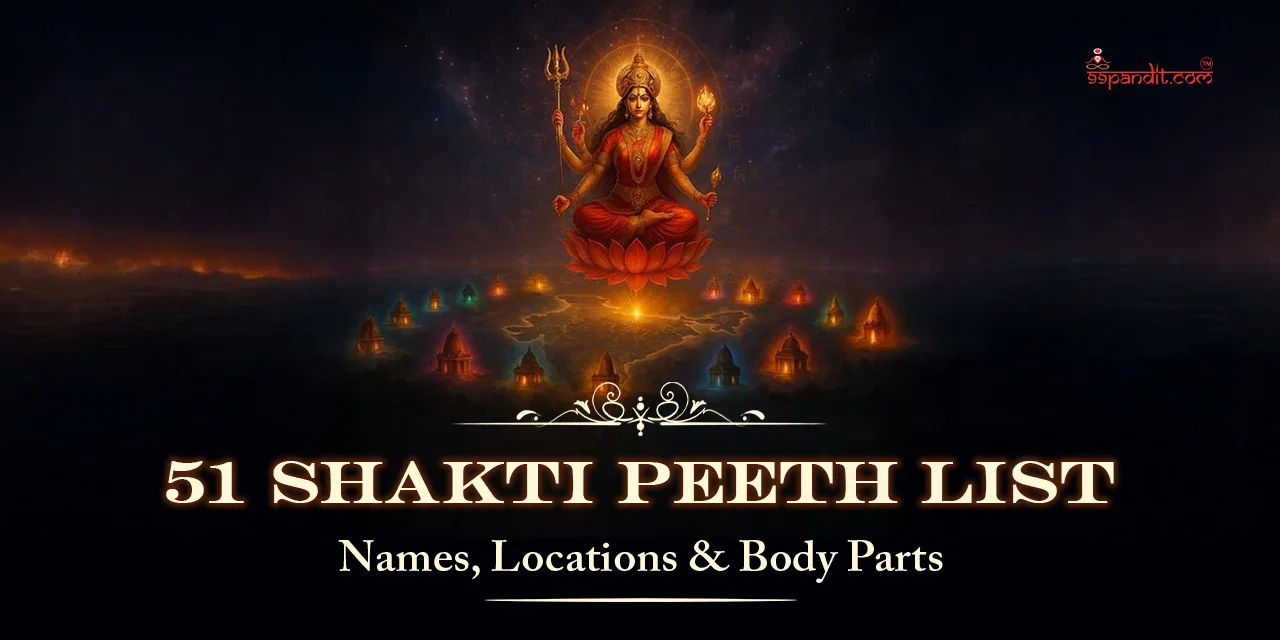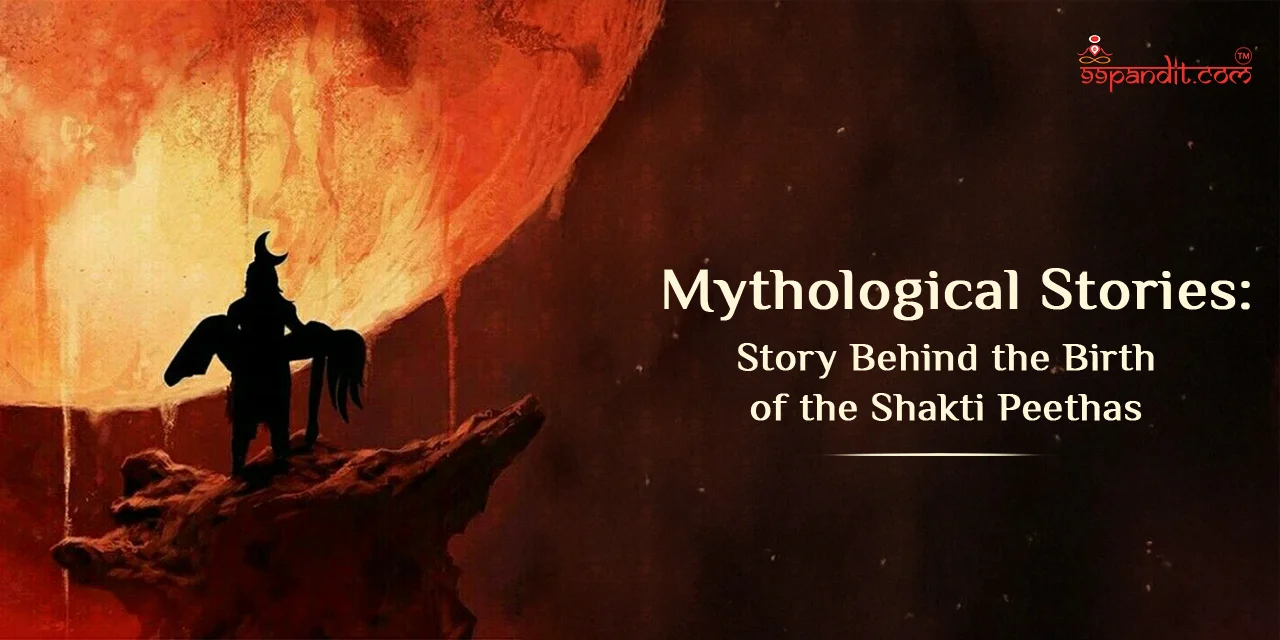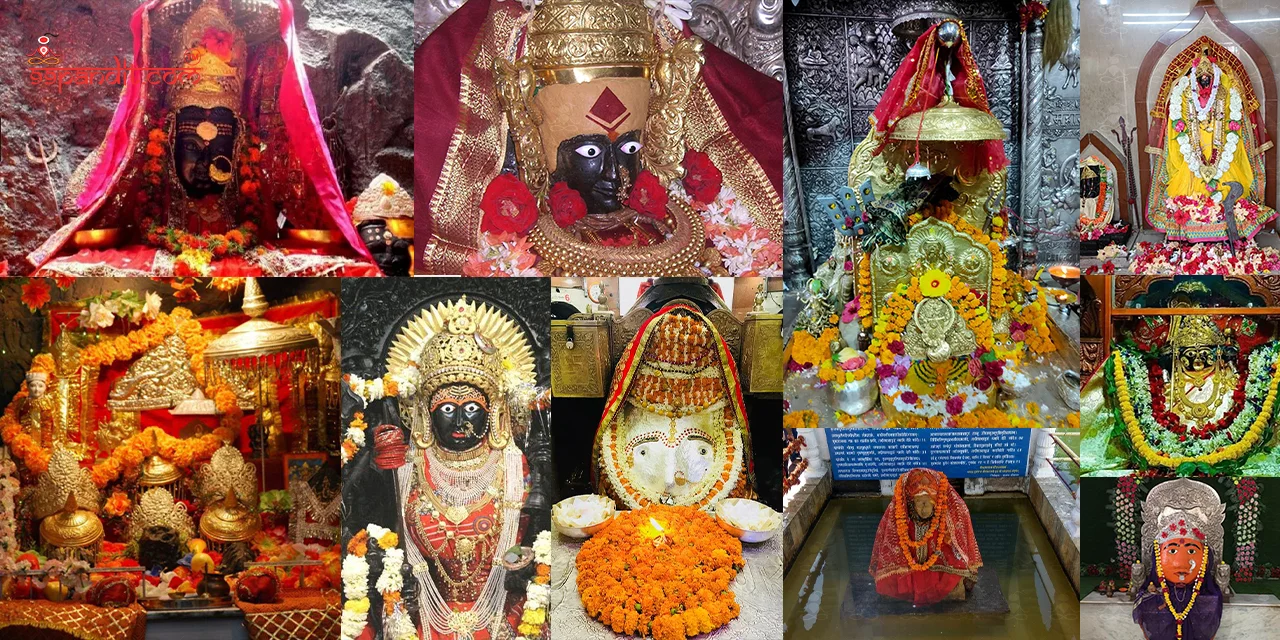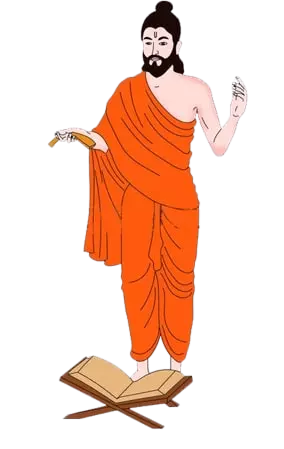Top 7 Famous Temples in Varanasi You Can’t Miss
Famous Temples in Varanasi: Varanasi, also called Kashi or Banaras, the city of Lord Shiva, is believed to achieve liberation.…
 0%
0%

51 Shakti Peeth List: In a world full of distractions, unnecessary digital information, and emotional fatigue, individuals tend to find spiritual refuge. Shakti Peethas provide that anchoring power.
These are not mere material temples, energy sites, wherein the divine feminine energy, or Shakti, is said to stay in complete vigour.

Every Shakti Peetha is an energy centre of the Earth. People who go there or worship from a distance get energy.
During Navratri or Durga Puja, it demonstrates how the religion of Shakti knows no geographies or generations.
Interestingly, most yogis and tantrics believe that these Peethas are on energy meridians (nadis) of the Earth, similar to chakras within the human body.
Therefore, when you are at a Shakti Peetha, you do not simply worship, but feel. The vibration, chants, bells, and rituals tap into something much deeper than the surface level.
These Peethas are equally symbols of women’s empowerment. They reflect a moment when the feminine was revered as supreme power.
In contemporary times, these temples urge girls and women to reconnect with their inner voice, strength, and divinity.
From Kamakhya of Assam, which has tantric energy, to Kalighat in Kolkata, where lakhs of devotees visit, each Shakti Peetha is full of living energy.
Whether you are rich or poor, young or old, if you visit there with faith, you come back lighter, stronger, and richer in spirit.
| No. | Name of Shakti Peetha | Location (State/Country) | Body Part/Ornament |
| 1 | Kamakhya | Guwahati, Assam | Yoni (womb) |
| 2 | Dakshineswar / Kalighat | Kolkata, West Bengal | Right Toes |
| 3 | Tripura Sundari | Udaipur, Tripura | Right Foot |
| 4 | Satipeeth Janakpur | Janakpur, Nepal | Left Cheek |
| 5 | Ambaji | Gujarat | Heart |
| 6 | Hinglaj Mata | Balochistan, Pakistan | Top of head |
| 7 | Jwala Ji | Kangra, Himachal Pradesh | Tongue |
| 8 | Chamundeshwari | Mysore, Karnataka | Hair |
| 9 | Bhairavi Devi | Chhattisgarh | Left Leg |
| 10 | Mahalakshmi | Kolhapur, Maharashtra | Eyes |
| 11 | Vaishno Devi | Jammu and Kashmir | Right Arm |
| 12 | Naina Devi | Bilaspur, Himachal Pradesh | Eyes |
| 13 | Vindhyavasini | Vindhya Hills, Uttar Pradesh | Knee |
| 14 | Manasa Shaktipeeth | Mansa, Punjab | Right Hand |
| 15 | Tara Tarini | Ganjam, Odisha | Breasts |
| 16 | Kireet | Kireetkona, West Bengal | Crown of Head |
| 17 | Bahula | Bardhaman, West Bengal | Left Arm |
| 18 | Ujjaini (Mahakaleshwar) | Ujjain, Madhya Pradesh | Elbow |
| 19 | Jayanti | Baurbhag, Meghalaya | Left Thigh |
| 20 | Sravani | Srisailam, Andhra Pradesh | Neck |
| 21 | Vibhash | Tamluk, West Bengal | Left Ankle |
| 22 | Gandaki Chandi | Muktinath, Nepal | Cheeks |
| 23 | Sugandha | Barisal, Bangladesh | Nose |
| 24 | Janasthana | Nashik, Maharashtra | Chin |
| 25 | Yashor | Jessore, Bangladesh | Palm |
| 26 | Ratnavali | Khanakul-Krishnanagar, WB | Right Shoulder |
| 27 | Sainthia (Nandikeshwari) | Birbhum, West Bengal | Necklace |
| 28 | Kanchi Kamakshi | Kanchipuram, Tamil Nadu | Navel |
| 29 | Suchindram | Tamil Nadu | Upper Teeth |
| 30 | Kalmadhav | Amarkantak, Madhya Pradesh | Hip |
| 31 | Jalandhar | Punjab | Left Breast |
| 32 | Nalhati | West Bengal | Vocal Cord |
| 33 | Panchsagar | Bihar | Lower Teeth |
| 34 | Gandaki | Pokhara, Nepal | Knees |
| 35 | Kalmadhav | Madhya Pradesh | Buttocks |
| 36 | Guhyeshwari | Kathmandu, Nepal | Hips |
| 37 | Amarnath | Jammu and Kashmir | Throat |
| 38 | Kamgiri | Assam | Waist |
| 39 | Danteshwari | Dantewada, Chhattisgarh | Teeth |
| 40 | Shivaharkaray | Karachi, Pakistan | Eyes |
| 41 | Mahalakshmi Peetha | Maharashtra | Right Hand |
| 42 | Chandranath | Chittagong, Bangladesh | Right Arm |
| 43 | Jaintiapur | Meghalaya | Left Rib |
| 44 | Karnat | Bihar | Right Rib |
| 45 | Kurukshetra | Haryana | Right Ear |
| 46 | Purnagiri | Uttarakhand | Navel |
| 47 | Bhabanipur | Bangladesh | Left Anklet |
| 48 | Prabhas Patan | Gujarat | Stomach |
| 49 | Srisailam | Andhra Pradesh | Neck |
| 50 | Chattal | Bangladesh | Head |
| 51 | Udaipur | Odisha | Right Toe |
The 51 Shakti Peethas are not only physical temples; they are living manifestations of feminine power, called Shakti. In Hindu culture, Shakti is the power of all creation, movement, and change.
She is the manufacturer of life, the force driving gods, and the trigger that turns the universe around.
At the Shakti Peethas, she is worshipped in a plethora of forms — as Durga, Kali, Kamakhya, Tripura Sundari, and others — each assuming a diverse aspect of womanhood and universal power.
Relevance Today
In our current world, where women are suppressed or ought to maintain predetermined roles, the Shakti Peethas remind us of the holiness of feminine power.
They say to each girl and woman: You are not inferior; you are Shakti. However emotional or adventurous, tranquil or fiery, these energies belong to the divine feminine.
Even for the men, bonding with Shakti makes them find a balance of their inner energies, adopt empathy, and become spiritually whole. At their essence, the Shakti Peethas are festivals of power, dignity, and equilibrium.
In each idol, in each legend, in each ritual, you’ll discover an aspect of the eternal feminine, the reminder that the world starts and ends with her.
Once upon a time, during the gods and ages of the golden era, there was a girl named Sati. She was the daughter of King Daksha and the largest devotee of Shiva. Since childhood, all she could dream of was being with Shiva.
While other people regarded him as a mad ascetic, who would sit amidst shamashaans and be covered with ash, Sati beheld beyond that — she saw his reality, his strength, his serenity.
Despite knowing Sati’s love and devotion for Shiva, Daksha held a swayamvar ceremony for Sati but intentionally excluded Shiva.

However, Shiva was presented there in another form so that no one could recognise him. But Sati knew that Shiva was there.
She ignored the other suitors and threw the wedding garland into the air, which miraculously landed on Shiva, whom Sati manifested. Defying her father’s wishes, they both got married.
Now Daksha, being very egoistic and ambitious, never swallowed the fact that his daughter married someone like Shiva, who didn’t hold with rules or royal pride.
So one day, Daksha organized a massive yagya (a sacred fire ritual). He invited all the gods, kings, sages — but Shiva was not invited.
Nevertheless, out of love for her father, Sati chose to attend. Perhaps his anger had blown over.
Unfortunately, what awaited her was anything but love. Daksha insulted Shiva in public even though he was not present.
Daksha made fun of their marriage and humiliated him in the presence of all the devas because Sati was there. He wanted Sati to leave him after hearing this nonsense.
But she was completely shattered, realizing that her body was no longer fit for Shiva’s soul. She jumped into the yagya flames and gave up her life.
When the news of Sati’s sacrifice reached Shiva, his heart was broken beyond imagination.
He rushed there, cursed Daksha, took Sati’s burnt body in his lap, and started roaming all over the universe, wailing, mourning, weeping.
The whole universe trembled. The gods were terrified – if Shiva did not stop, everything, even the universe, would be destroyed.
That’s when Lord Vishnu used his Sudarshan Chakra to cut Sati’s body into pieces. Wherever a piece fell, that place became a Shakti Peetha — sacred and alive with her divine energy.
These became 51 in total, each representing not just her body part, but her memory, her love, and the power of a woman who stood for her beliefs.
Shiva didn’t get upset with Vishnu, because deep inside, he knew — this was the only method to sustain Sati’s energy throughout time, so people could still feel her spirit.
So even in suffering, there was divine purpose. Up until today, when we travel to a Shakti Peetha, we’re not only going to a temple.
We’re entering a space that holds emotion, love, sacrifice, and power. The Peethas aren’t simply stories — they’re real, and they’re inviting us home.
Although the Shakti Peethas are famous for having the divine goddess Shakti within them, no Shakti Peetha exists without Bhairava, a fierce and protective incarnation of Lord Shiva.
In every Shakti Peetha, besides the goddess’s shrine, there exists a temple or a symbolic representation of Bhairava, regarded as the guardian, protector, and consort of the goddess in her divine energy aspect.
In accordance with scriptures, when the body of Sati dropped to the ground and the peethas were born.
Lord Shiva appeared as Bhairava in each place to protect the energy of Shakti. In comparison, Devi symbolizes compassion, power, and creation.
Bhairava signifies discipline, fearlessness, and destruction of evil. They keep each other in balance as energy and consciousness.
In the majority of Peethas, Bhairava’s existence might not be imposing and grand like that of the goddess shrine, but he is never left out.
He is sometimes a small idol at the entrance, sometimes a shivalinga, and sometimes a fierce god with a trident and dog (his vahana).
On going to the Shakti temple, several devotees go to the Bhairava temple first and pour mustard oil, alcohol (in tantric practice), black cloth, or sindoor, depending upon local tradition.
The Bhairava worship is especially prominent in tantric rituals, particularly where both the ferocious and loving sides of divinity are revered, such as Kamakhya, Jwalaji, or Tarapith.
Bhairava defines that real devotion should be fearless, and only when we let go of ego and ignorance can we gain the real blessings of Shakti.
So, if Shakti is the divine mother, Bhairava is the protective father who ensures that her (Shakti/Sati) energies are safe and strong for everyone who comes near her.
Most people believe—“There are 51 Shakti Peethas in total… how do I visit all of them?” But the truth is—you don’t have to do that. If you visit even one Peeth with a sincere heart, Maa Shakti blesses you.
These are not just ancient temples—they contain centuries of worship, tears, prayers, courage, and healing.
When you step into a Shakti Peeth, you step into a hall where thousands of people have cried, fallen, and risen. Suppose you go to Kalighat in Kolkata or Ambaji in Gujarat.

You go with your grief—maybe something in life is bothering you. You sit quietly in a corner, fold your hands, and that energy? Feel it.
There is no magic. The place is just full of Shakti—a power that does not roar, but heals you from within.
You may cry for no reason. Or suddenly feel weightless. Or just feel safe, like Maa is hugging you from behind. And even when you don’t “feel” anything special, believe me—She hears. She sees.
And when you walk out of that temple, something has changed inside you…slowly, but surely. You don’t need to do a big puja or repeat a thousand mantras.
Just go once. Offer a flower. Light a diya. Chant “Jai Mata Di”…and leave the rest in Her hands.
It’s not how many Peethas you mark on your list—it’s how deep you reach into your soul. And sometimes, that one darshan gives more patience than years of chasing things that never bring peace.
Because when Maa Shakti sees your heart, she doesn’t need your words. She just walks with you…silently…like a mother. And suddenly life seems a little easier.
Going to Shakti Peethas sounds wonderful. But who has the time, money, or leaves to go to 51 temples?
Some are in hills, some abroad, some deep within forests. But does that mean we give up accessing Maa Shakti? No way.
That’s where 99Pandit comes into play.
Whether you’re in Jaipur, Delhi, Mumbai, or Canada, the US, Dubai, 99Pandit brings maa ki shakti to your doorstep, wherever you are.
Even if you cannot visit Kamakhya or Kalighat in person, you can still feel the energy connection. That’s the power of devotion — it travels.
You don’t have to always take giant strides. A small diya, a simple prayer, and maa hears.
So if you’ve been thinking about organizing a puja for some time, but something always keeps putting it off. Book one today on 99Pandit. Simple and reliable.
In the end, it’s not about how many Shakti Peethas you’ve visited. It’s about how deeply you’ve felt maa’s presence — in a temple, in a prayer, in your own heart.
Every Peetha is connected to Maa Sati’s story: her love, her pain, her power. And somewhere, our stories also match hers — heartbreaks, standing strong, fighting for ourselves, and finally rising.
Some go on long yantras, and some merely sit in their mandir at home with their hands folded — both are acceptable.
Since Maa doesn’t look at tickets or rituals — she catches faith, she listens to your silence.
And now, even if you are unable to go to these Peethas, websites like 99Pandit make it so much more convenient.
Puja ho, mantra ho, blessings ho — all are just one prayer away. So the next time life gets too much, or you feel isolated…
Just say: “Maa.” No words are needed. She already understands. And that’s the sort of love only Shakti can provide — quiet, gentle, powerful, eternal.

100% FREE CALL TO DECIDE DATE(MUHURAT)

Table Of Content
Filters by categories
All Pujas
Puja On Special Events
Upcoming Pujas
Dosha Nivaran Pujas
Mukti Karmas
Filters by Trending Topics
Filters by Regions
North Indian Pujas
South Indian Pujas